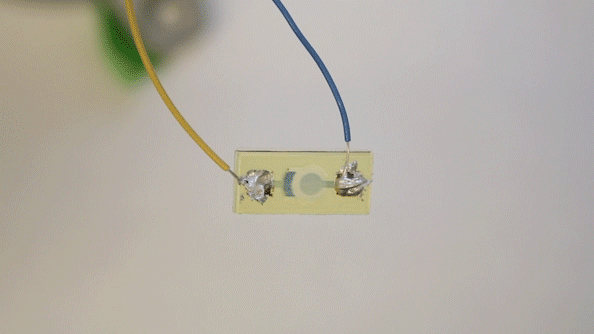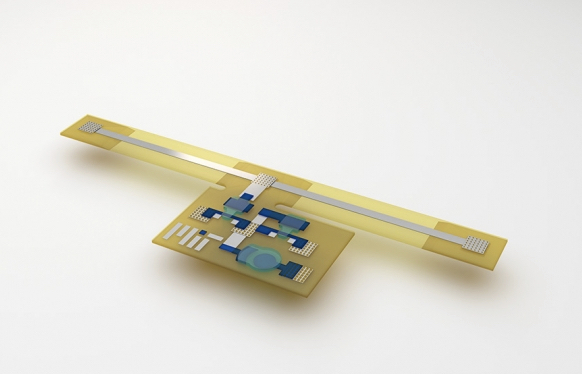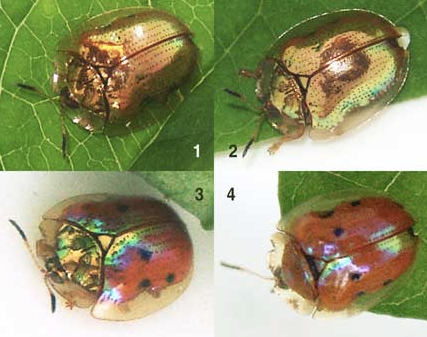Flexible, printable circuits inspired by goldbug beetle

Poking a golden tortoise beetle ("goldbug") triggers the insect's color to change from gold to a red-orange. Inspired by the natural system underlying that insectoid superpower, MIT researchers have developed flexible sensors circuits that can be 3-D printed. Eventually, the technology could lead to sensor-laden skin for robots. From MIT News:
"In nature, networks of sensors and interconnects are called sensorimotor pathways," says Subramanian Sundaram, an MIT graduate student in electrical engineering and computer science (EECS), who led the project. "We were trying to see whether we could replicate sensorimotor pathways inside a 3-D-printed object. So we considered the simplest organism we could find...."
The MIT researchers' new device is approximately T-shaped, but with a wide, squat base and an elongated crossbar. The crossbar is made from an elastic plastic, with a strip of silver running its length; in the researchers' experiments, electrodes were connected to the crossbar's ends. The base of the T is made from a more rigid plastic. It includes two printed transistors and what the researchers call a "pixel," a circle of semiconducting polymer whose color changes when the crossbars stretch, modifying the electrical resistance of the silver strip.
In fact, the transistors and the pixel are made from the same material; the transistors also change color slightly when the crossbars stretch. The effect is more dramatic in the pixel, however, because the transistors amplify the electrical signal from the crossbar. Demonstrating working transistors was essential, Sundaram says, because large, dense sensor arrays require some capacity for onboard signal processing.
To build the device, the researchers used the MultiFab, a custom 3-D printer developed by (professor Wojciech) Matusik group. The MultiFab already included two different "print heads," one for emitting hot materials and one for cool, and an array of ultraviolet light-emitting diodes. Using ultraviolet radiation to "cure" fluids deposited by the print heads produces the device's substrate.

